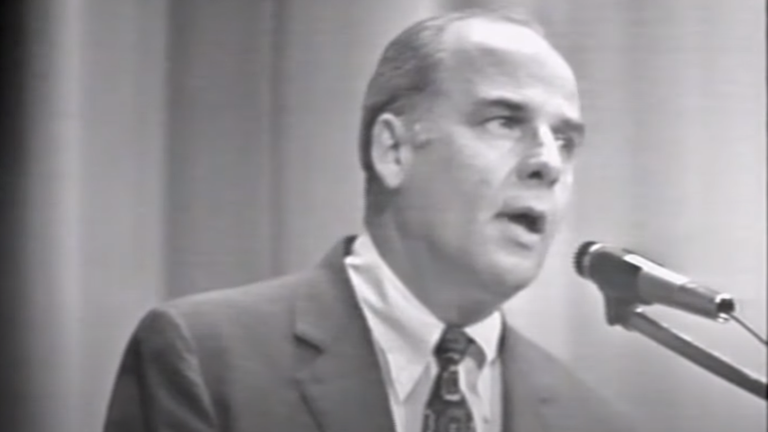Earth Day is celebrating its 55th anniversary this year.
The environmental event is marked by an estimated one billion people across more than 190 countries, according to the Earth Day Organisation.
But what actually is Earth Day and why should we care about it?
When is Earth Day and is there a theme?
Earth Day is celebrated annually on 22 April.
This year’s theme is “Our Power, Our Planet”, with campaigners calling on “everyone to unite around renewable energy” to help triple clean electricity by 2030.
Helping to outline the movement’s goals, Denis Hayes, the organiser of the very first Earth Day, said: “For years we have been fed the lie that only fossil fuels can power the planet, that is not true.
“By the 2030’s, the largest source of electricity generation on the planet will be solar power.”
Kathleen Rogers, president of the Earth Day Organisation, added: “We need people power to support the big switch to renewable energy.
“We encourage everyone to talk to your local mayor, boss, neighbors, community leaders, and local and national legislators, to explore and to champion switching to renewables.”
Last year, the theme was “Planet vs Plastics”, with campaigners pushing for a 60% reduction in the production of plastics by 2040.
When did Earth Day first begin?
Earth Day is a concept first brought about by Gaylord Nelson, a politician and environmentalist who served as a senator and governor in the United States.
The senator had many concerns about the damaged environment in the US, including the large oil spill off the coast of Santa Barbara, California, in 1969.
He was also inspired by student anti-war protests and their passion for change during the Vietnam War, as well as the impacts the conflict had on spending priorities in the country.
In the hope of expanding public awareness about air and water pollution, Senator Nelson led environmental teach-ins on campuses across the country – backed by activist Denis Hayes and co-chair Pete McCloskey.
‘If our cities don’t work, America won’t work’
The first Earth Day was marked in 1970 and became a huge success, with 20 million people participating nationwide in the US.
At the time, people took part by demonstrating in parks, streets and auditoriums against oil spills, power plants, sewage, toxic dumps, loss of wilderness and more.
The first Earth Day also came at a time when a wave of legislation was being passed in the US, including the Clean Water Act, Clean Air Act and Endangered Species Act – the next 10 years were seen as the “environmental decade” because of such measures and the focus on green issues.
Speaking to a crowd in Milwaukee before the first climate event, Senator Nelson said: “I don’t think there’s any other issue, viewed in its broadest stance, which is as critical to mankind, as the issue of the quality of the environment in which we live.”
During that first Earth Day speech, Senator Nelson added the “environment is all of America and its problems”.
He highlighted the environmental problem was heightened by the government spending billions of dollars on the war in Vietnam.
Senator Nelson argued the government should have invested back into the US instead. He said the US was a country that was “decaying, crowded, congested, polluted”.
Inspired and determined to make a difference, Senator Nelson added: “If our cities don’t work, America won’t work.”
Earth Day goes global
In 1990, Earth Day became a global event with 200 million people and 141 countries participating.
During that year, the event also helped boost recycling efforts worldwide and in 1992, it paved the way for the United Nations Earth Summit.
In 1995, former US President Bill Clinton awarded Senator Nelson the Presidential Medal of Freedom, for his role as the Earth Day founder.
How can people participate?
The Earth Day Network says the day is to mark the importance of dedicating time, resources, and energy to solving the climate crisis.
There are many ways to participate, and the movement says these are actions that can be taken all year round, rather than just on the day:
- Educate – It says anyone, whether they are an educator, student, faith leader, or general member of the public, can learn the facts, spread awareness, and inspire action
- Advocate – You can write to your political leaders, sign petitions and demand action in the name of the movement
- Mobilise – The group suggests joining or organising town halls and rallies in your local community
- Pledge – It says you can pledge your support on social media and encourage others to get involved.
‘Raise our collective voice to call for action’
Bronwen Smith-Thomas, Co-director at The Climate Coalition, previously told Sky News that participating in Earth Day is “a great way for people who are worried about climate change and the state of our natural world to take meaningful action”.
“The important thing for this Earth Day, and each day after, is to raise our collective voice to call for action to ensure every generation to come has a safer, fairer, greener future to look forward to,” Ms Smith-Thomas added.









